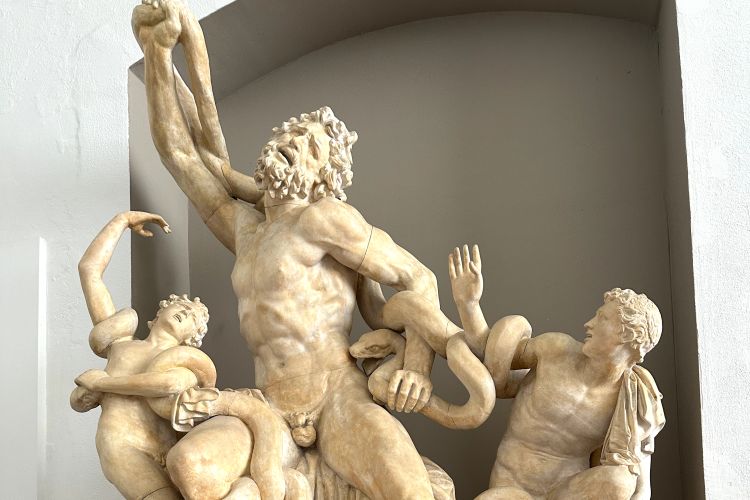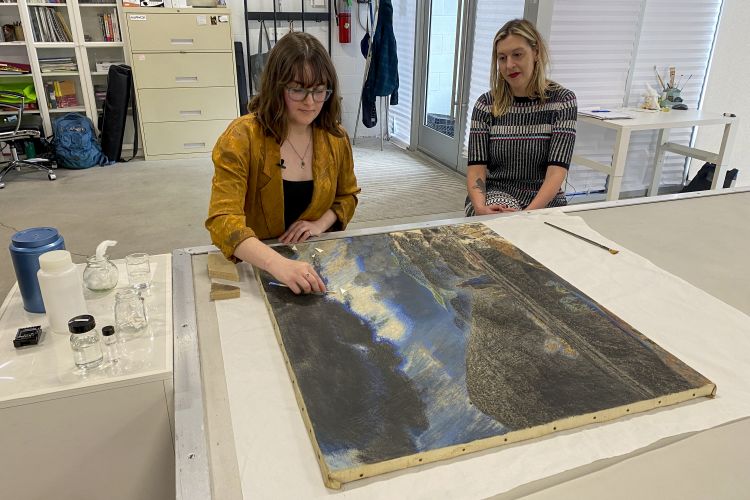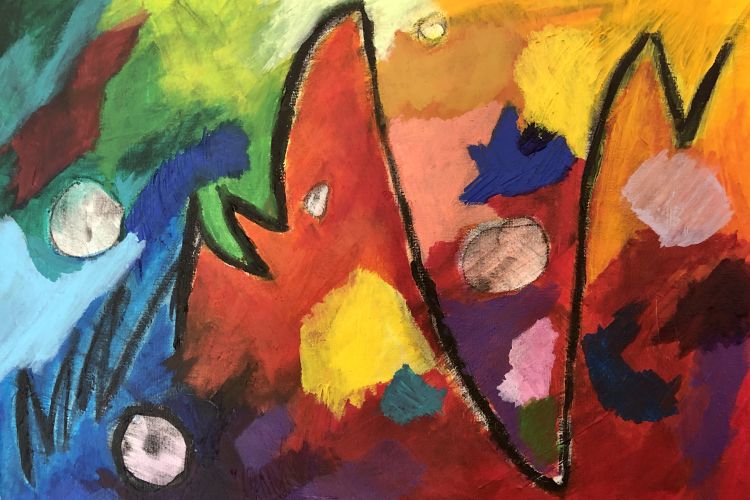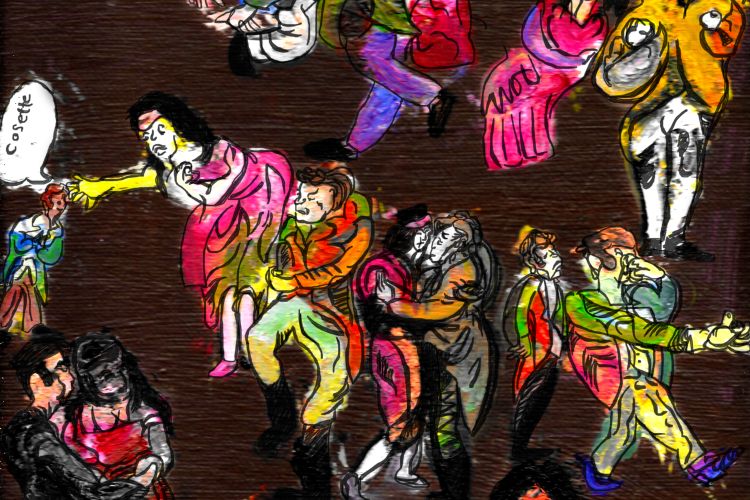STORIES FROM PAFA
Cardin Moffett '19: Technology and Art Becomes Student’s Focus
Cardin Moffett (Cert. ’19) came to PAFA to study painting but he couldn’t shake the nearly 20 years experience he has working in technology, as a graphic designer and programmer.
“Coming to PAFA, it was as if I found the right context to discuss the work I always had in me about technology,” he said. “It was the right opportunity to show my work.”
Through PAFA’s Fine Arts Venture Fund, Moffett was able to marry his technology skills with art. The Fine Arts Venture Fund allows students to engage in a grant-seeking process, in which they develop a unique art project, write a grant proposal, and, for the semi-finalists in the process, present their work to funders.
In 2018 and 2019, Moffett applied for funding and received a total of more than $5,000 over two years. He said the grants have given him the chance to step back and reconsider my focus and purpose.
“It allowed me to bring many years of professional and personal interest to bear and lean into my oldest strengths and interests—to leverage nearly 20 years as a graphic designer and programmer and to redefine those capabilities as artistic tools.”
Cardin Moffett '19, Living Systems (2019).
With his 2019 Fine Arts Venture Fund grant, Moffett was able to create Living Systems, now on view as part of PAFA’s Annual Student Exhibition. The Annual Student Exhibition (ASE) has been a tradition at PAFA for more than 100 years and is the culminating event in a student's journey at PAFA. Each spring, graduating students have the opportunity to curate, install and sell their own works in the PAFA museum galleries.
PAFA students create more than 1,000 paintings, sculpture, works on paper and installations. It is one of the most celebrated student group shows in the country.
Living Systems combines virtual reality viewing stations with a series of large-scale, robotics-based sculptural installations. Moffett is inviting suspicion into people’s sense of resonance with the natural world.
The main piece in the installation is a sculptural maquette made up of 100 pieces of wood with foam-core software, microcontrollers, and 100 servo motors. The sculpture uses a highly simplified algorithmic driver to represent natural action, like wind and water.
But for all the brainpower that went into building the installation, Moffett said the work itself shouldn’t be viewed as very intelligent.
“It’s almost like a stage prop. It’s almost dumb and that’s what I really like about it,” he said. “It seems really organized and it seems like it has a logic to it but it doesn’t.”
To compliment the sculpture, Moffett uses three virtual reality headsets to create environments that are stand-ins for actual constructions. VR has allowed Moffett to propose large-scale installations that would be cost-prohibitive if done in reality.
“I could build spaces, truly immersive spaces that would test out the emotional viability of the proposed projects,” he said. “The idea was obvious, a natural choice, as I have functional experience in many of the tools required to author in VR.”
As he graduates, Moffett has plans to continue marrying technology with art.
“Over the past year I’ve dug deeply into the medium of VR—first using it as a vetting tool for the original projection-based projects, and then in response to the new questions, new ideas, and new discoveries.”



